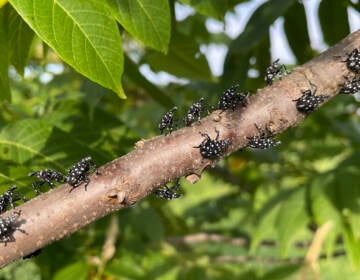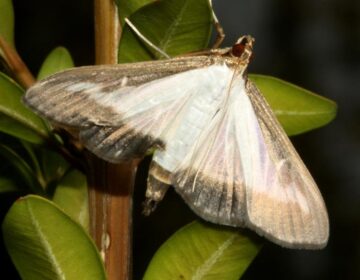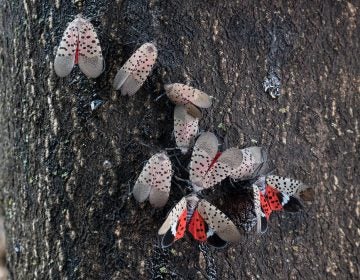Spotted lanternfly squashing was once all the rage in Pennsylvania. Is that zeal fading?
An app dedicated to promoting the squish and kill of the spotted lanterfly is waning in popularity in Pa., while gaining in states where the invasive species is newer.
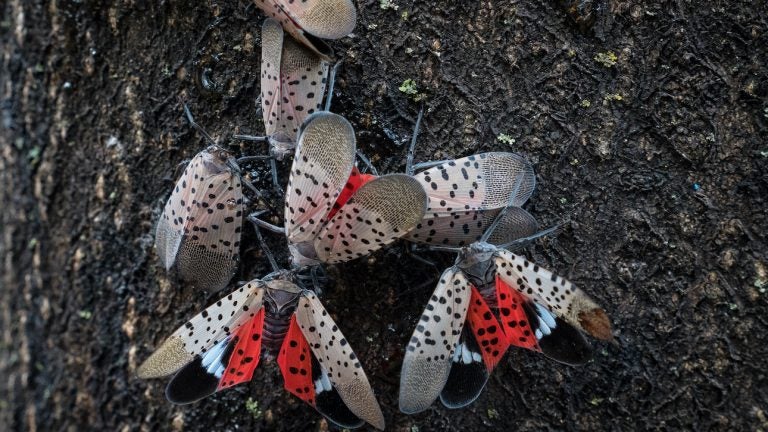
The spotted lanternfly is a destructive insect that feeds on a wide range of fruit, ornamental, and hardwood trees, including grapes, apples, walnut, and oak. (Lance Cheung/USDA)
This story originally appeared on Spotlight PA.
Much like HitchBOT, the hitchhiking robot, spotted lanternflies made it to Pennsylvania and were immediately targeted for annihilation.
In some ways, the robot — a Canadian traveler and social experiment famously dismembered on a roadside in Philly — got off easy. The lanternfly, by comparison, has unleashed and sustained the Quaker State’s blood lust for several years running. That’s largely thanks to state-issued kill-on-sight orders meant to curb the spread of the ecologically and economically threatening pest through altruistic violence.
But is the zeal for that violence starting to fade?
Brad Line — creator of the Squishr app, probably the best tool available for gauging such a thing — thinks so. He says app usage is down here and rising in other states where the invasive bug is new and the novelty of the hunt is still fresh.
”I think there’s a fatigue factor setting in,” Line told PA Local by phone. “I mean, we had some people [in Pennsylvania] who were spending hours a day squishing these things and recording them in the app. And, you know, after a year or two or a summer or two of doing that, you kind of say ‘OK, well, I’ve probably got better things to do with my time.’”
Line added: “In the early going, we had people who were literally doing thousands of posts of dead bugs a day. There was this one woman who would literally fill five-gallon buckets with the carcasses of spotted lanternflies. It was insane.”
Harriet Campbell, a retiree in Plymouth Meeting, Montgomery County, is that woman. At one point she was among the app’s most prolific users and amassed an astounding 13,000-plus confirmed kills. (She says she remains in the all-time top three.)
Campbell acknowledges her body count is down these days but says it isn’t apathy as much as opportunity: Her condominium removed several trees and the bugs just aren’t around like they used to be.
“At one point they were all over the windows and walls, like soldiers marching. I had recently retired and they were driving me crazy. And so, you know, I just started whacking them. And then it became sort of an OCD thing and a passion.”
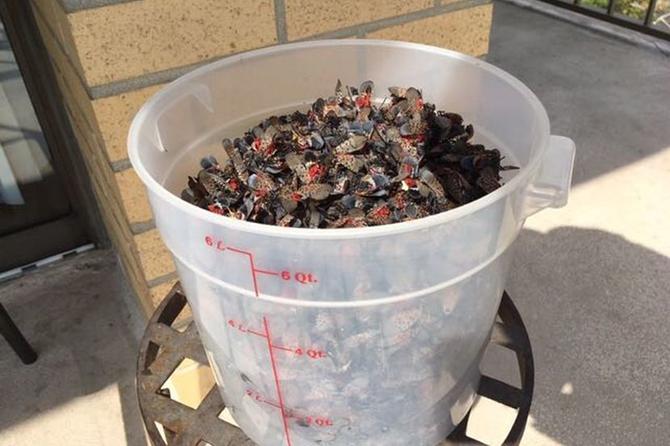
Campbell said she walked a half mile in a single day along her apartment’s wraparound porch chasing the bugs — her weapon of choice, a flyswatter, clenched tightly in her fist. (The trick, according to Campbell, is standing behind the bugs, prolific jumpers themselves, and heading them off by bringing the swatter down from the front.)
Her passion for lanternfly smashing was only turbo-charged by the leaderboards and shared purpose found on the Squishr app, which launched in 2019, months before pandemic lockdowns took hold and left more people, like Campbell, staring at their walls as this reviled — yet surprisingly photogenic — bug moved in.
But the reason for the decline in Pennsylvania usage of the app is, to Campbell’s point, most likely due to the fact that the bug’s presence in the most populous part of the state — Philadelphia and its collar counties — has dropped sharply. (Billy Penn shares a few theories as to why.)
Roughly 90% of user posts on the Squishr app back in 2020 were from Pennsylvania, with only a few in northern New Jersey. It’s “roughly a 50/50 split between Pennsylvania and northern New Jersey / New York” now, Line explained.
His app, which has been updated and made more user-friendly since launching, is also gaining ground in western Pennsylvania, a newish frontier, and to a lesser extent Maryland. (Line, a director of technology for a financial services firm, said he does not make any money off Squishr.)The spotted lanternfly, an Obama-era holdover, was first found in the U.S. in Pennsylvania — Berks County to be exact — in 2014. The state’s Department of Agriculture told PA Local that the first kill-on-sight orders for the non-native species went out soon after.The premise of the Squishr app, inspired by Line’s children and the Litterati platform, was simple: incentivize the eradication of a potentially destructive pest and share data with state officials that could help track its spread in real-time.
The Department of Agriculture said aside from sample data received prior to its launch, no data was ever received from the app. Line said there were no “squishes” reported in any counties not already under related quarantines, making the data gleaned redundant. Spotted lanternfly quarantines are currently in place in 45 of 67 counties statewide.
Whether citizen-led bounties have really made a dent in the lanternfly population or prevented the kind of damage officials warned about is up for debate. A recent article in The Atlantic raises doubts.But the bug is still definitely on the move, and experts are warning Pennsylvanians to check their cars before they travel for signs of hangers-on.
They’re the hitchhikers now. HitchBOT, rest in peace.
 Spotlight PA is an independent, non-partisan newsroom powered by The Philadelphia Inquirer in partnership with PennLive/The Patriot-News, TribLIVE/Pittsburgh Tribune-Review, and WITF Public Media.
Spotlight PA is an independent, non-partisan newsroom powered by The Philadelphia Inquirer in partnership with PennLive/The Patriot-News, TribLIVE/Pittsburgh Tribune-Review, and WITF Public Media.
WHYY is your source for fact-based, in-depth journalism and information. As a nonprofit organization, we rely on financial support from readers like you. Please give today.



